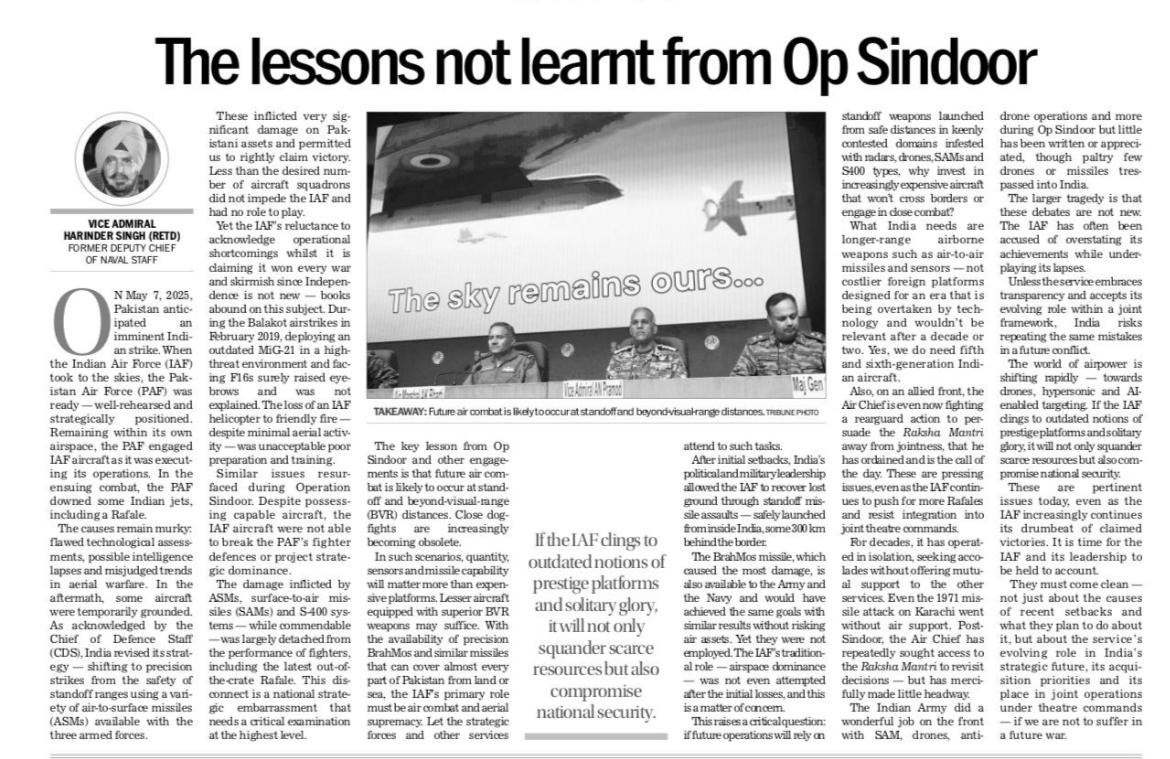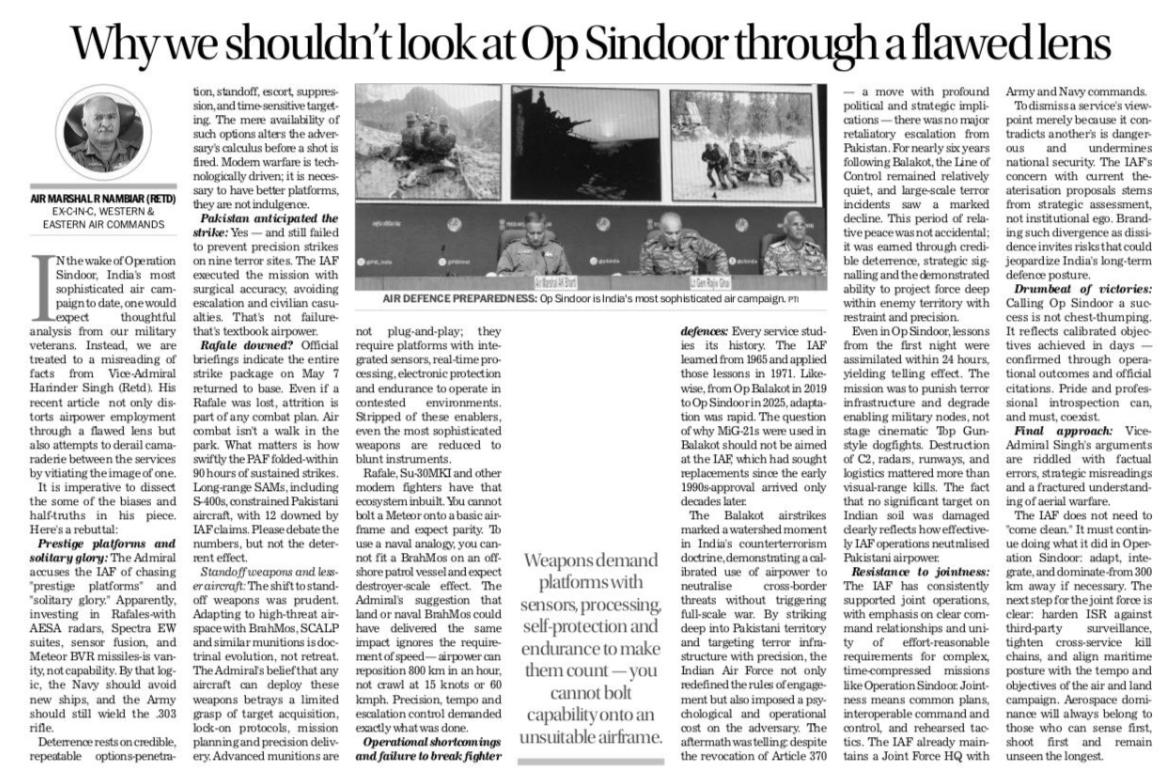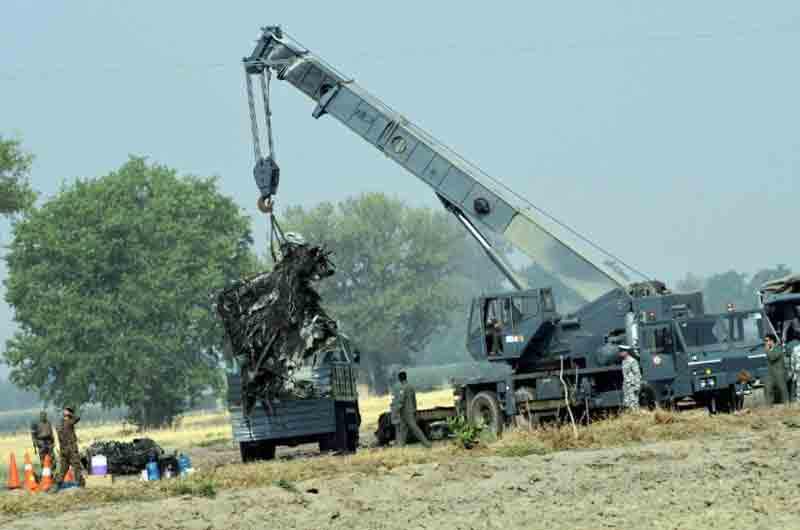After the failed military operation against Pakistan, deep fissures have surfaced within the Indian armed forces. What began as a criticism from the Navy has now escalated into an open exchange of accusations between senior retired officers of the Indian Navy and Air Force.
The controversy began when Vice Admiral (retd.) Harminder Singh, former Deputy Chief of Naval Staff, wrote a sharply critical column in The Tribune India. In it, he labeled the Indian Air Force’s recent campaign “a continuation of failures,” alleging that despite possessing modern fighter jets like the Rafale, the Air Force failed to achieve its objectives against Pakistan.

He conceded that the Pakistan Air Force (PAF) was “better prepared and in a superior tactical position” during the confrontation. Singh claimed that several Indian aircraft, including a Rafale, were shot down while still within Indian airspace — a result, he suggested, of “intelligence failure and ignorance of modern aerial warfare trends.”
Citing past incidents like the Balakot strike and the friendly-fire Mi-17 helicopter crash, Singh wrote that “claims of victory are repeated after every campaign, but history and records say otherwise.” He also questioned the Air Force’s resistance to the proposed unified tri-service command, and the rationale for investing billions of dollars in manned aircraft when, in his view, “future wars will be fought with stand-off weapons.”
Air Force Hits Back
In response, Air Marshal (retd.) Raghunath Nambiar of the Indian Air Force published a strong rebuttal, accusing Admiral Singh of making “unscientific and biased comments” that “distorted facts and harmed the relationship of friendship and trust between the three services.”

He dismissed Singh’s remarks about the Rafale as “superficial and unrealistic,” quipping that, “If Rafale is a wasteful investment, then the Navy does not need new aircraft and the Army does not need modern rifles.”
Nambiar admitted that all Rafale aircraft returned safely from the mission but added pointedly, “Even if one were half-damaged, that is part of war — this is not a walk in an air mission park.”
He further ridiculed the Navy’s reliance on BrahMos missiles, arguing that “an aircraft can change position at 800 km/h — a missile or a ship crawling at 15 knots cannot achieve the same operational flexibility.”
Defending the Air Force’s stance on the unified command, Nambiar cautioned that “targeting the Air Force in this manner is detrimental to national security.” He also rejected the demand for full public disclosure of operational details, stating that “what was done in Operation Sindoor must continue — not be explained.”
Analysis: Cracks in India’s Military Cohesion
This rare public spat between senior officers has laid bare the inter-service rivalries simmering within India’s defense establishment. Analysts say that the fallout from Operation Sindoor — which New Delhi publicly portrayed as a success — has triggered pressure not only within the military but also at the political level.
The candid criticism from within the armed forces undermines the official narrative of victory and raises questions about operational planning, inter-service coordination, and strategic priorities.
Observers warn that the growing divide among the three services could pose a serious challenge to India’s future joint warfare strategy and defense modernization plans — especially at a time when the region’s security environment remains volatile.
Discover more from Defence Talks | Defense News Hub, Military Updates, Security Insights
Subscribe to get the latest posts sent to your email.





